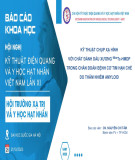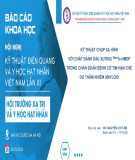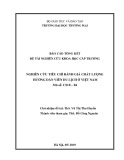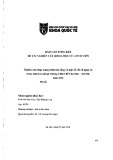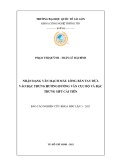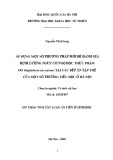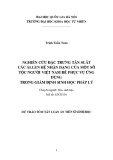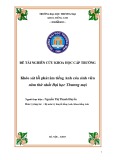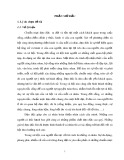
Available online at http://ccforum.com/content/8/6/E2
Evidence-Based Medicine Journal Club
EBM Journal Club Section Editor: Eric B. Milbrandt, MD, MPH
Journal club critique
The routine use of albumin for fluid resuscitation of critically ill
patients is not warranted
Shakeel Amanullah1 and Ramesh Venkataraman2
1 Clinical Fellow, Department of Critical Care Medicine, University of Pittsburgh School of Medicine, Pittsburgh, Pennsylvania, USA
2 Assistant Professor, Department of Critical Care Medicine, University of Pittsburgh School of Medicine, Pittsburgh, Pennsylvania, USA
Published online: 1 November 2004
This article is online at http://ccforum.com/content/8/6/E2
© 2004 BioMed Central Ltd
Critical Care 2004, 8: E2 (DOI 10.1186/cc3006)
Expanded Abstract
Citation
Finfer S, Bellomo R, Boyce N, French J, Myburgh J, Norton
R; SAFE Study Investigators: A comparison of albumin and
saline for fluid resuscitation in the intensive care unit. NEJM
2004, 350:2247-2256.1
Hypothesis
When 4% albumin is compared with 0.9% sodium chloride
(normal saline) for intravascular-fluid resuscitation in
patients in the intensive care unit (ICU), there is no
difference in the 28-day rate of death from any cause.
Methods
Design: Multicenter, double blind, randomized controlled
trial
Setting: Closed, multidisciplinary ICUs of 16 academic
tertiary hospitals in Australia and New Zealand between
November 2001 and June 2003
Patients: 6997 ICU patients ≥ 18 years of age who were
judged by their treating physician to require fluid
resuscitation to maintain or increase intravascular volume,
with this decision supported by the fulfillment of at least one
objective criterion. Patients admitted to the ICU after cardiac
surgery, after liver transplantation, or for the treatment of
burns were excluded.
Intervention: Patients were randomly assigned to receive
either 4% albumin or normal saline, with randomization
stratified according to institution and whether there was a
diagnosis of trauma on admission to the ICU. Study fluids
were supplied in identical 500-ml bottles, and blinding was
ensured through the use of specially designed masking
cartons and specially designed and manufactured
administration sets. The effectiveness of the blinding was
confirmed in a formal study before the trial was initiated.
The treating clinicians determined the amount and rate of
fluid administration. In addition to the study fluid, patients
received maintenance fluids, specific replacement fluids,
enteral or parenteral nutrition, and blood products at the
discretion of the treating clinicians. The monitoring of central
venous pressure, pulmonary-artery catheterization, and all
other aspects of patient care were performed at the
discretion of the treating clinicians.
Outcomes: The primary endpoint was 28-day all-cause
mortality. Secondary endpoints were the proportion of
patients with new organ failure and the duration of
mechanical ventilation, renal replacement therapy, and ICU
and hospital stay. Differences in the primary endpoint were
also examined in six predefined subgroups according to the
baseline presence or absence of trauma, severe sepsis,
and acute respiratory distress syndrome (ARDS). The study
had 90% power to detect a 3% absolute difference between
groups for the primary endpoint.
Results
Of the 6997 patients who underwent randomization, 3497
were assigned to receive albumin and 3500 to receive
saline. Both groups had similar baseline characteristics. Of
those who completed 28-day follow up, there were 726
deaths (20.9%) in the albumin group, as compared with 729
deaths (21.1%) in the saline group (relative risk of death,
0.99; 95 percent confidence interval, 0.91 to 1.09; P=0.87).
There were no differences in secondary endpoints between
groups.
A post-hoc subgroup analysis of trauma patients showed a
trend towards increased mortality in the albumin group,
which appeared to be due to a greater number of deaths in
trauma patients with associated brain injury. Among patients
who had trauma without brain injury, there was no



